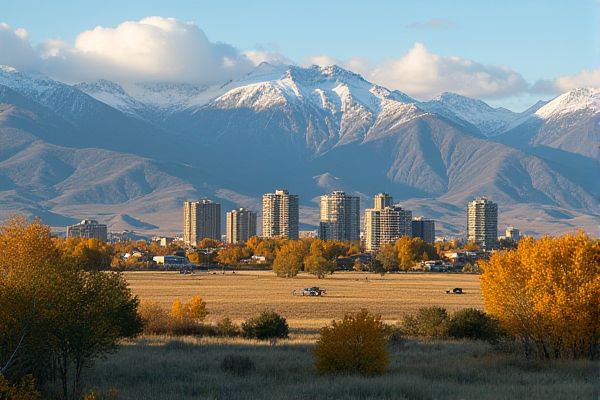
What to know as new resident in Montana: Harsh winter weather. Sparse urban areas. Outdoor recreational opportunities. Wildlife encounters. Strong community vibe. Limited public transportation. Western culture influence. Economic reliance on agriculture. Diverse property regulations. Internet accessibility issues.
Harsh winter weather.
As a new resident in Montana, be prepared for harsh winter weather including significant snowfall, icy roads, blizzard warnings, high wind warnings, and extreme cold temperatures, with specific criteria for different regions such as Eastern and Western Montana. It is crucial to Winterize your vehicle, have a winter storm survival kit, and be aware of the various winter weather advisories and warnings issued by local authorities.
Sparse urban areas.
In Montana, sparse urban areas are defined by the presence of Micropolitan Statistical Areas, such as Kalispell, Helena, Butte, and Bozeman. These areas have populations between 10,000 and 50,000 and are distinguished from more densely populated metropolitan areas and rural counties. For more information, you can access the full article on the Rural Economy in Montana, which provides detailed insights into these regions and their economic dynamics.
Outdoor recreational opportunities.
As a new resident in Montana, you can enjoy a wide range of outdoor recreational opportunities, including basketball, disc golf, cross-country skiing, snowshoeing, tennis, horse shoes, hunting, and activities like ATVs, dirt bikes, and rock climbing in various parks and forests such as the Lewis and Clark National Forest. To explore all these fantastic activities and more, check out the diverse offerings at Visit Great Falls Montana, which provides information and resources for making the most of your recreational adventures in this magnificent state.
Wildlife encounters.
As a new resident in Montana, it's crucial to know that wildlife can be encountered anywhere, especially during dawn and dusk. Practice responsible behavior around wildlife, such as keeping a safe distance, using binoculars or spotting scopes, and carrying bear spray when hiking, to ensure positive and safe interactions. For more detailed guidelines and tips, visit the Wildlife Watching website. This resource offers valuable insights for appreciating the diverse and beautiful fauna that Montana has to offer, ensuring both human and animal safety.
Strong community vibe.
Bozeman, Montana, exemplifies a strong community vibe with a diverse population that supports local businesses, participates in various community events, and maintains a loyal and inclusive atmosphere, making it easy for new residents to feel at home. As a new resident in Montana, you can expect a strong community vibe through Newcomers Events that foster connections, provide information, and encourage engagement with the local community. These events are often hosted by local organizations and supported by realtors and community leaders, creating a welcoming environment for everyone.
Limited public transportation.
As a new resident in Montana, it's important to know that public transportation is limited, especially outside major cities. While cities like Billings, Bozeman, and Missoula have local bus networks and some free or low-cost public transportation options, rural areas have very limited or no public transportation, relying on alternatives such as human service transportation, family members, and volunteer services. For further details, consider exploring the comprehensive insights available on Transportation in Montana, which provides an overview of the various transportation options and infrastructures within the state.
Western culture influence.
As a new resident in Montana, there is no specific information on Western culture influence in the context of obtaining a driver's license or other residency requirements, but you will need to adapt to the state's unique blend of rural and urban lifestyles and comply with the necessary documentation and registration processes. For comprehensive details on acquiring a driver's license, you may visit the Montana MVD Express Website, which provides essential guidance on driver licenses and vehicle registration.
Economic reliance on agriculture.
Agriculture is a foundational sector of Montana's economy, with on-farm activities, particularly cattle and wheat production, contributing significantly to the state's revenue, jobs, and gross state product, especially in rural areas. For more information on the impact of agriculture in Montana, you can visit the Montana State University Extension AgImpact website.
Diverse property regulations.
As a new resident in Montana, it's crucial to understand that property regulations are governed by the Montana Unit Ownership Act for condominiums, and HOAs must comply with this act and the Fair Housing Act. Additionally, zoning regulations must promote public health, safety, and general welfare, and be compatible with nearby municipalities, as outlined in the Montana Code Annotated.
Internet accessibility issues.
As a new resident in Montana, you should be aware that the state faces significant internet accessibility issues, particularly in rural areas where about 61% of the population resides, with 18% of Montanans being either unserved or underserved by broadband internet. The state has received substantial federal funding to expand high-speed internet access through programs like the Broadband Equity, Access, and Deployment Program and the Digital Equity Act.
